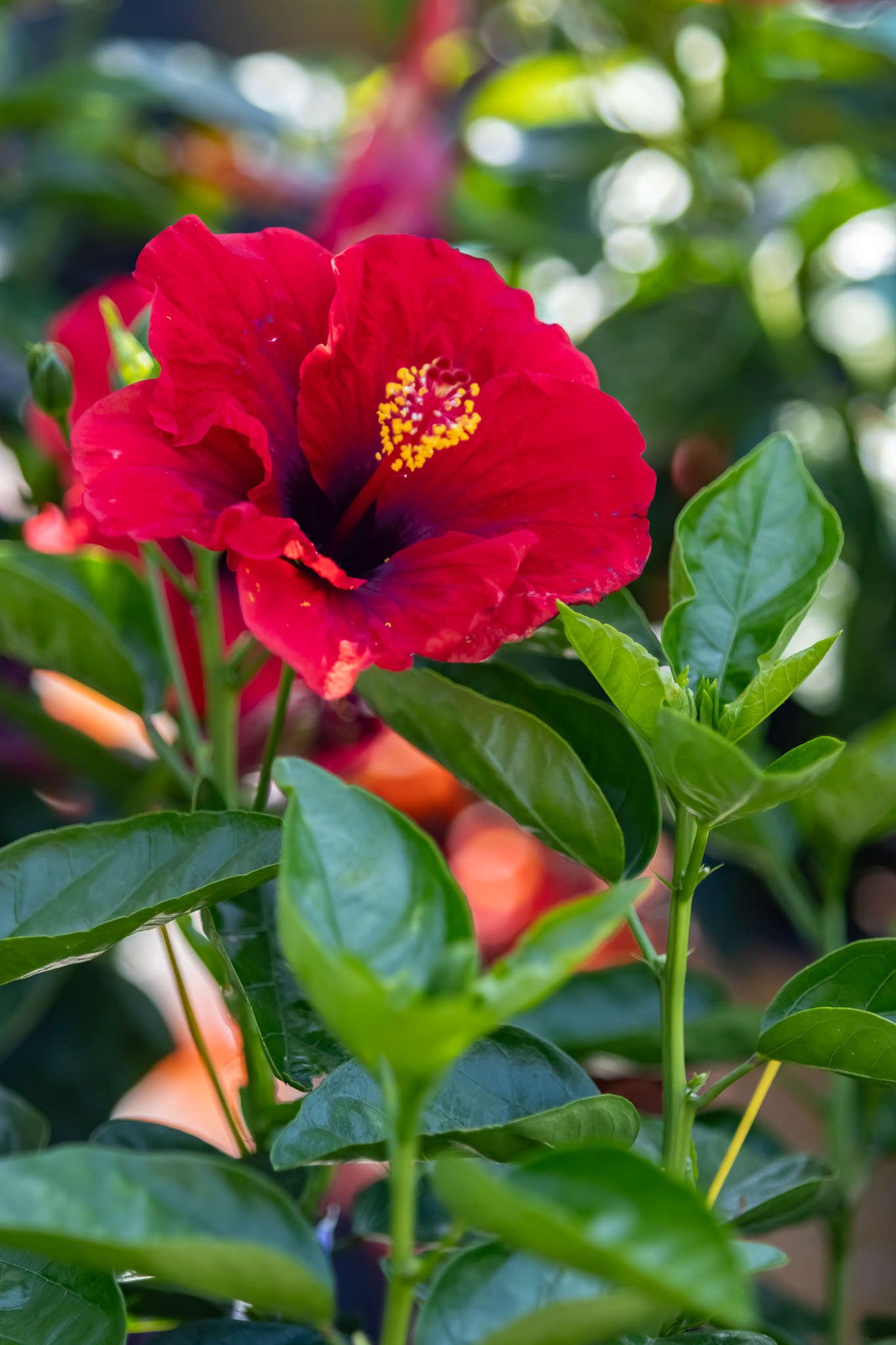It’s summer! Which means it’s time to dive into the world of hibiscus. These gorgeous, eye-catching flowers are not just a plant you can see on your Hawaiian vacation, but a fantastic addition to any garden. This blog will give you the lowdown on where these plants come from, what makes them different, and how to care for them. Let’s get started!



The Origins of Hibiscus
Hibiscus plants are part of the mallow family (Malvaceae) and there are about 300 species of them. They originally come from warm, tropical spots around the world, especially Asia, the Pacific Islands, and the Caribbean.
Tropical Hibiscus
Tropical hibiscus (Hibiscus rosa-sinensis) is the flashy one in the family. Think bright, bold flowers in reds, pinks, yellows, and oranges. These guys come from East Asia, mainly China, and are the go-to for that island vibe.
Perennial Hibiscus
Perennial hibiscus, also known as hardy hibiscus, includes types like Hibiscus moscheutos (Rose Mallow) and Hibiscus syriacus (Rose of Sharon). These plants come from North America and parts of Asia. Unlike their tropical cousins, they can handle colder weather, making them perfect for tropical-inspired gardens in cooler climates.
Tropical vs. Perennial Hibiscus
Climate Preferences
The big difference here is where they like to live.
- Tropical Hibiscus: These plants love it warm and humid. They can’t handle frost and do best in USDA hardiness zones 9-11. In the Hampton Roads area, we consider this type an annual that you’ll need to replenish every season.
- Perennial Hibiscus: These are the tough ones that can survive colder weather, suitable for USDA zones 4-9. They go dormant in the winter and come back in the spring, so they’re a reliable choice for gardens that get frosty and are a great perennial in Hampton Roads.
Flower Power
Both types have amazing flowers, but they differ in size and color.
- Tropical Hibiscus: The flowers are smaller, about 4 to 6 inches across, and come in a ton of colors, even some funky multi-colored ones.
- Perennial Hibiscus: These plants have huge flowers, sometimes up to 12 inches wide! The colors are usually softer, like white, pink, red, and purple.
Growth Style
Tropical and perennial hibiscus also grow differently, which affects how you use them in your garden.
- Tropical Hibiscus: These plants are more bush-like and grow to about 3 to 6 feet tall. They’re great in containers and can be pruned to stay compact.
Perennial Hibiscus: These are tall and sturdy, often reaching 4 to 8 feet. Their size and big blooms make them awesome for creating a dramatic garden centerpiece.
Taking Care of Your Hibiscus
No matter the type, hibiscus plants need some love to look their best. Here are some tips to keep them happy:
Watering
- Tropical Hibiscus: They like steady moisture but hate sitting in soggy soil. Water them regularly, but let the soil dry out a bit between waterings.
- Perennial Hibiscus: These need more water when they’re growing. Keep the soil evenly moist, especially during hot, dry times.
Feeding
- Both types enjoy regular feeding. Use a balanced plant food like Fertilome Rooting & Blooming plant food and follow the instructions. Tropical hibiscus might need more frequent feeding when they’re blooming.
Pruning
- Tropical Hibiscus: Prune them to keep their shape and size in check. Trim off dead or weak branches to encourage new blooms.
- Perennial Hibiscus: Cut back the stems in late winter or early spring to promote new growth. Deadhead the flowers to keep them blooming.
While tropical hibiscus add a unique flair with its vibrant blooms, perfect for warm climates or as stunning indoor plants, perennial hibiscus is a reliable choice for gardens that experience winter chill. Whichever type you choose, you'll be rewarded with spectacular flowers right in your backyard. To stay inspired and grow with us, follow us on Facebook, Instagram, Pinterest, and TikTok to dig into the joys of gardening!
